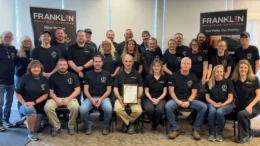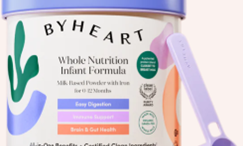The following is an excerpt from the article “Let’s Preserve: Root Vegetables – Beets, Carrots, Turnips, and Rutabagas. ( https://extension.psu.edu/lets-preserve-root-vegetables-beets-carrots-turnips-and-rutabagas )
Root vegetables must be processed in a pressure canner. They cannot be safely canned in a boiling water bath or atmospheric steam canner.
Caution: Root vegetables must be processed in a pressure canner. Root vegetables cannot be safely canned in a boiling water bath or atmospheric steam canner. Only acidified vegetables, as in pickled beets, can be safely processed in a water bath or atmospheric steam canner.
Beets
Recommended Varieties
Varieties for canning include Detroit Dark Red, Cylindra, Ruby Queen, Red Ace, Red Cloud, and Golden. In addition, Chioggia (striped) and Albino (white) are suitable for pickling. Varieties for freezing include but are not limited to Albino and Early Wonder.
Quantity
One pound of beets without tops yields 2 cups of diced, peeled beets. An average of 14 pounds is needed per canner load of 7 quarts; an average of 8 pounds is needed per canner load of 9 pints. An average of 1 pound makes 1 pint of frozen beets.
Quality
Select deep, uniformly red, young, tender beets. Beets with a diameter of 1 to 1½ inches (2.5 to 4 cm) are preferred for whole packs for canning. Beets larger than 3 inches (7.5 cm) in diameter are often fibrous.
Preparation
Start with clean countertops and utensils. Wash hands with soap and warm water. All produce should be properly washed before it is consumed or preserved by rinsing, gently rubbing, or scrubbing with a clean vegetable brush under cold running water. Do not soak produce in water. Cut off beet tops, leaving an inch (2.5 cm) of stem and root to reduce color loss. Scrub well. Cover with boiling water. Boil until skins slip off easily (about 15 to 25 minutes for canning, depending on size). For freezing, cook until tender (25 to 30 minutes for small beets, 45 to 50 minutes for medium beets). Cool promptly in cold water, remove skins, and trim off root and stem. For canning, leave baby beets whole. Cut medium or large beets into ½-inch (13 mm) cubes or slices. Halve or quarter very large slices. Disposable gloves may be worn to prevent staining of hands.
Pressure adjustments for elevation: Dial Gauge Canner, 0 to 2,000 feet – 11 psi; 2,001 to 4,000 feet – 12 psi; 4,001 to 6,000 feet – 13 psi; 6,001 to 8,000 feet – 14 psi.
Weighted Gauge Canner, 0 to 1,000 feet – 10 psi; 1,001 feet and above – 15 psi.
Freezing Procedure
Don’t freeze more than 2 pounds of food per cubic foot of freezer capacity per day. Cool cooked beets promptly in cold water. Remove stem and taproot, and slip off skins. Cut into slices or cubes. Fill pint or quart zip-type plastic freezer bags or plastic freezer containers. Remove as much air as possible from freezer bags. Allow ½ inch (13 mm) of headspace in rigid plastic containers. Seal, label, and freeze. If desired, beets may be spread in a single layer on shallow trays or pans. Place in the freezer only long enough to freeze firm. Check often after the first hour to avoid loss of moisture. When beets are firmly frozen, package, leaving no headspace, and seal. Tray-packed beets remain looser, allowing you to pour desired amount from the container.
Canning Procedure
Read “Let’s Preserve: Basics of Home Canning (https://extension.psu.edu/lets-preserve-basics-of-home-canning)” before starting. Wash jars. Prepare lids according to manufacturer’s instructions. Pack prepared beets into hot jars, leaving 1 inch (2.5 cm) of headspace. If desired, add up to 1 teaspoon of canning or pickling salt per quart or ½ teaspoon per pint. Fill jar to 1 inch (2.5 cm) from the top with fresh boiling water. (Do not use the water beets were cooked in; it is dirty!) Remove air bubbles. Wipe jar rims with a clean damp paper towel. Adjust lids and process in a pressure canner. Process pints for 30 minutes and quarts for 35 minutes in a dial gauge pressure canner at 11 pounds of pressure or in a weighted gauge pressure canner at 10 pounds of pressure. Increase canner pressure at high altitudes as shown in Pressure Adjustments for Altitude as cited previously in this article.
To Process in a Pressure Canner: Place jar rack, 2 to 3 inches (5 to 7.5 cm) of hot water, and sealed jars in the canner. Fasten lid and heat canner on the high setting. After exhausting steam for 10 minutes, add a weighted gauge or pressure regulator or close the petcock to pressurize the canner. Start timing the recommended process when the desired pressure is reached.
Regulate heat to maintain a uniform pressure. When processing is complete, remove the canner from heat. Let the canner cool down naturally until it is fully depressurized. Then slowly remove the weighted gauge or open the petcock, wait 10 more minutes, and unfasten and carefully remove the canner lid.
Remove jars from the canner with a jar lifter being careful not to tilt the jars, to a wooden cutting board or towel-lined surface.
After Processing
Do not retighten screw bands. Cool jars for 12 to 24 hours and remove screw bands. Check lid seals. If the center of the lid is indented, the jar is sealed. Wash, dry, label and store sealed jars in a clean, cool dark place. If the lid is unsealed examine and replace jar if defective, use new lid and reprocess as before or store in the refrigerator. Wash screw bands and store separately. Canned goods are best if consumed within a year and are safe as long as lids remain vacuum sealed.
Additional Information
Sometimes canned red beets turn pale in color when pressure canned. The red pigments in beets are sensitive to high temperatures and can transform into a colorless compound during canning. Some varieties of beets are more sensitive to heat than others. The reaction is reversible and often the color of the canned product will return to a darker red after a few days of storage at room temperature. There are no research-tested recipes for home canning of glazed or thickened beets (e.g., Harvard beets). Thicken and season plain canned beets when you are ready to serve them.
Authors
Andy Hirneisen, MA
Distinguished Extension Educator and Team Leader, Retail and Consumer Food Safety
Expertise
Food Safety
Food Quality
Environmental Monitoring
Home Food Preservation
Digital Education
Luke LaBorde, Ph.D.
Professor of Food Science
Expertise
Tracking Listeria monocytogenes in produce production, packing, and processing environments
Food safety validation of mushroom growing, packing, and processing procedures
Farm food safety, Good Agricultural Practices (GAP) training
Hazards Analysis and Risk Based Preventive Controls (HACCP) training
Technical assistance to home and commercial food processors
Food Safety Modernization Act (FSMA)
Martha Zepp
Former Program Assistant
Pennsylvania State University











































